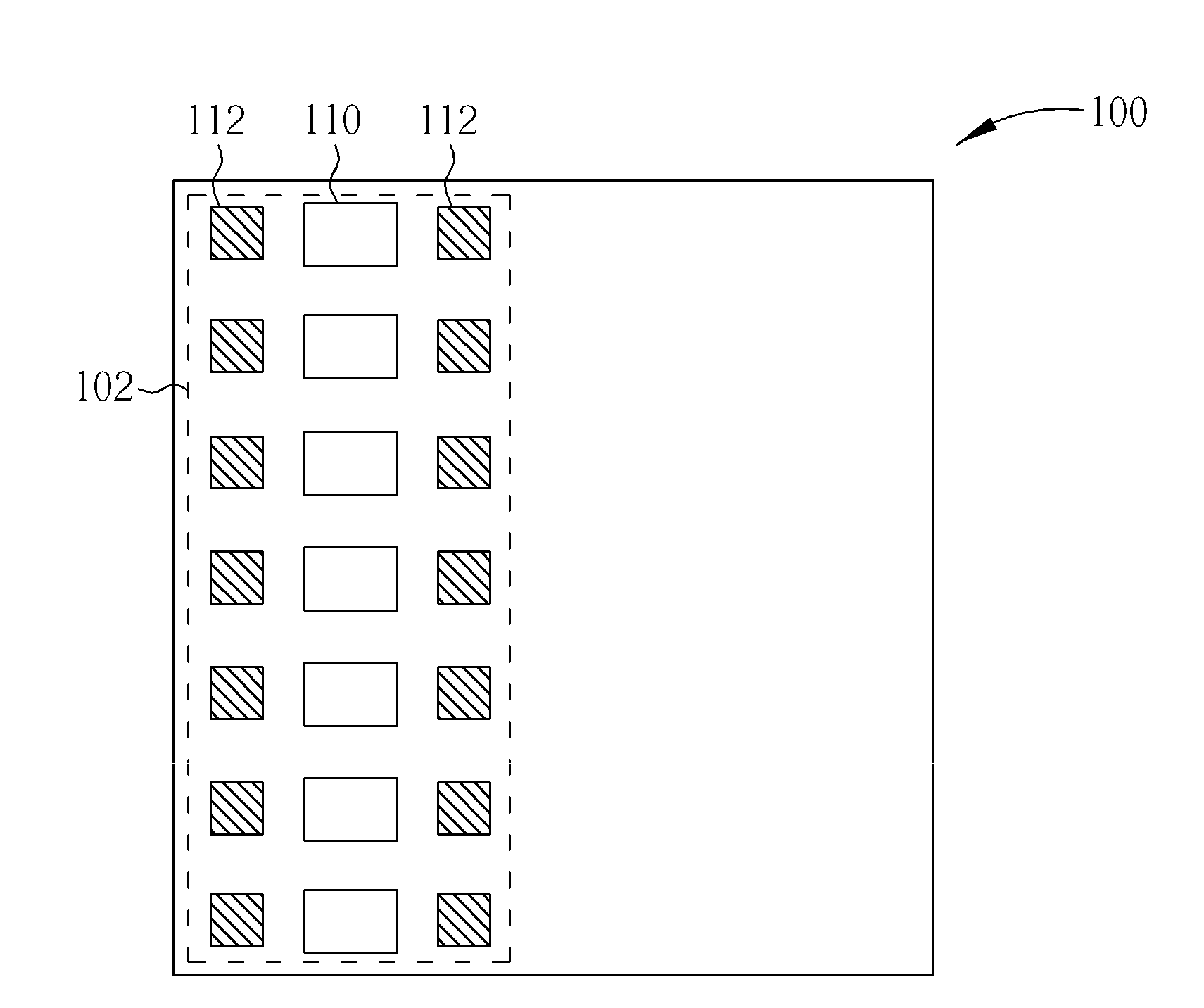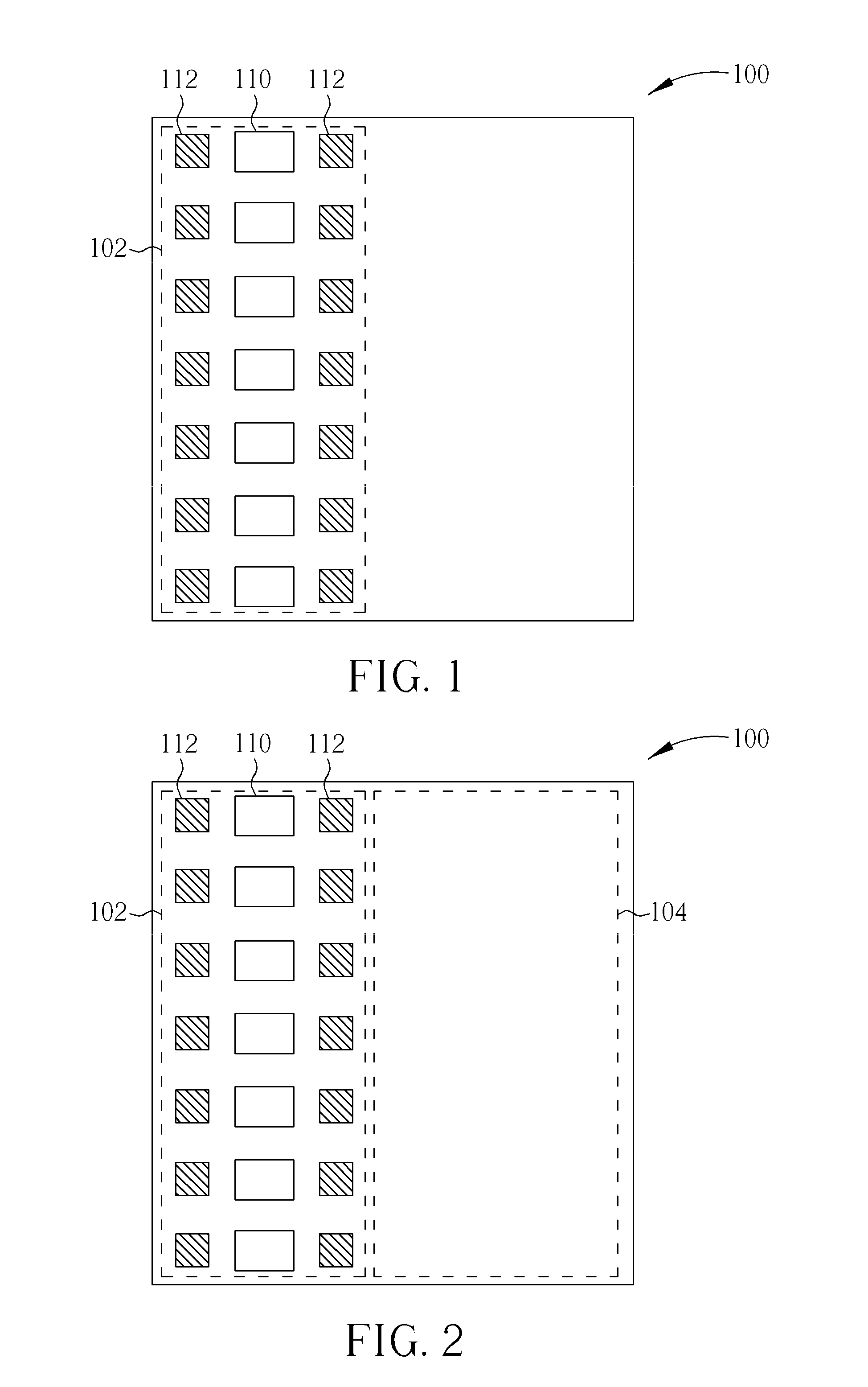Method of forming assist feature patterns
a technology of assist feature and pattern, applied in the field of method of forming assist feature pattern, can solve the problems of thermal expansion, reticle heating, complex and sophisticated ic structure, etc., and achieve the effect of improving the overlay compensation of the reticle, reducing light transmission rate, and reducing heat dissipation
- Summary
- Abstract
- Description
- Claims
- Application Information
AI Technical Summary
Benefits of technology
Problems solved by technology
Method used
Image
Examples
Embodiment Construction
[0021]Please refer to FIGS. 1-5A, which are schematic drawings illustrating a method for forming assist feature patterns provided by a first preferred embodiment of the present invention. It is noteworthy that since “reticle” frequently is used interchangeably with “mask” in the art, it will be understood that “reticle” and “reticle blank” as used herein encompass “mask” and “mask blank,” respectively, as these terms are encountered in the art. As shown in FIG. 1, the method for forming assist feature patterns of the preferred embodiment first provides an original layout pattern 100 from a data base. The original layout pattern 100 includes a plurality of printable features, and the printable features can include feature patterns 110 used to construct IC, such as doped region patterns, device patterns, or line patterns. The printable features can also include first dummy patterns 112 not used to form IC but required by the processes. For example, the prior art used to form a plurali...
PUM
 Login to View More
Login to View More Abstract
Description
Claims
Application Information
 Login to View More
Login to View More - Generate Ideas
- Intellectual Property
- Life Sciences
- Materials
- Tech Scout
- Unparalleled Data Quality
- Higher Quality Content
- 60% Fewer Hallucinations
Browse by: Latest US Patents, China's latest patents, Technical Efficacy Thesaurus, Application Domain, Technology Topic, Popular Technical Reports.
© 2025 PatSnap. All rights reserved.Legal|Privacy policy|Modern Slavery Act Transparency Statement|Sitemap|About US| Contact US: help@patsnap.com



